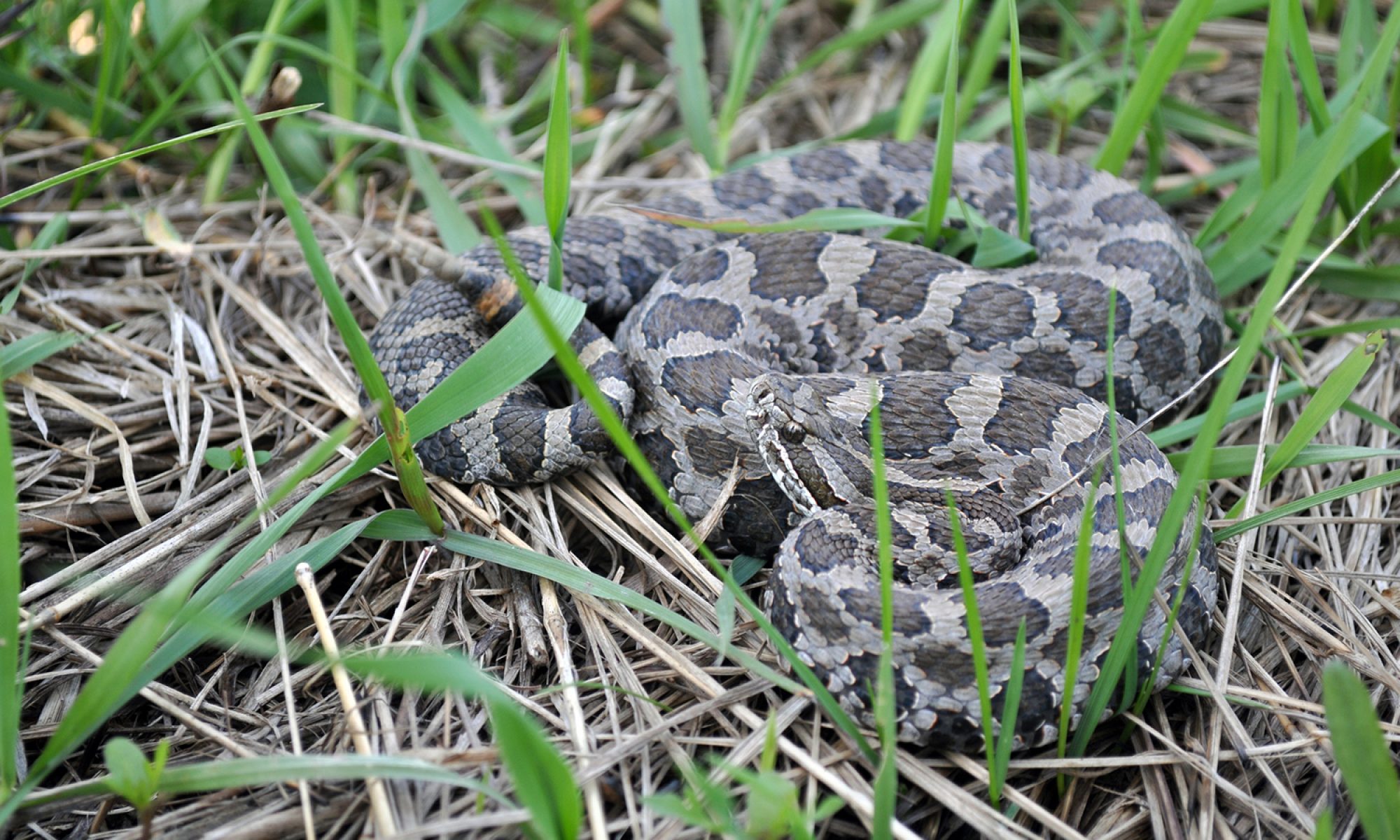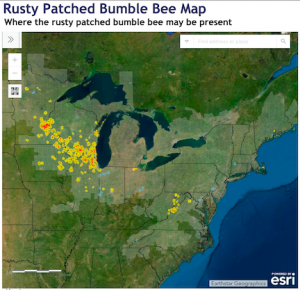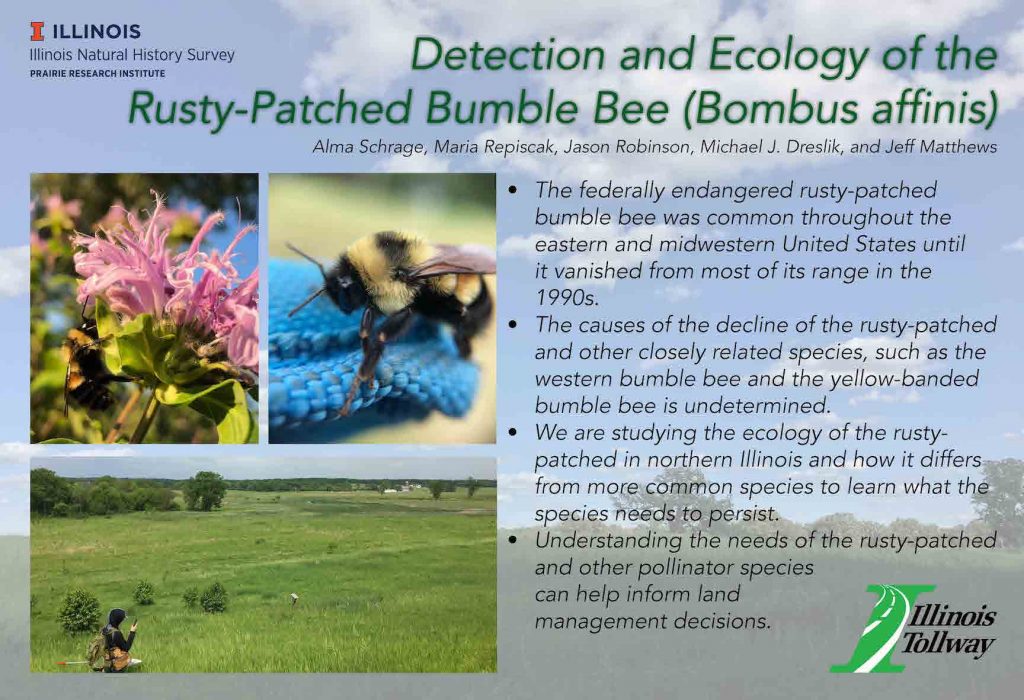The Rusty-Patched Bumble Bee was listed as endangered under the US Endangered Species Act in 2017.NatureServe currently lists the RPBB as G1, critically imperiled.
The Rusty Patched Bumble Bee (RPBB), like all bumble bees, has 3 different castes (queens, workers, and males). Each caste has distinguishing characteristics necessary for identification (Williams et al., 2014).


Bumble bee illustrations: Paul Williams (identification and color patterns) and Elaine Evans (bee body design). https://www.bumblebeewatch.org/app/#/species/profile
At the time of European settlement of North America, RPBB occurred across the eastern deciduous forests, from the southern terminus of the Blue Ridge northwards across the Ohio Valley, and into southern Quebec and Ontario and the maritime provinces of Canada.
Records from insect collections suggest that RPBB extended at least as far south as Champaign County, westward and northward across northern Illinois and into the Driftless Area.
Most recent observations of RPBB in Illinois have been in the greater Chicago/Lake Michigan region, Peoria area and Champaign County
In addition to surveying for RPBB before construction projects, we are working to understand more about the current distribution and ecology of the species.
-
- RPBB emerge earlier in spring than other bumble bee species
- early spring foraging on ephemeral woodland flowers
- summer season forage believed similar to other species
- overwintering hibernacula (leaf litter, compost piles, rock walls) may be limited or disturbed
- Queens may forage from April–September and begin nesting, often underground in rodent burrows or other structures
- Workers emerge starting in May
We are also comparing bumble bee communities at Tollway restoration sites to more established sites nearby.
Declines of bumble bees are not well understood but can be due to:
-
- diseases ranging from microsporidia, protozoan parasites, tracheal mites, and viruses
- habitat alteration – increased agriculture, urbanization, fragmentation, and degradation
- pesticides and herbicides,
- climate change,
- interactions with invasive species,
For more information about University of Illinois bee research, visit Beespotter.org
For more information on Rusty Patched Bumble Bee visit the Xerces Society


